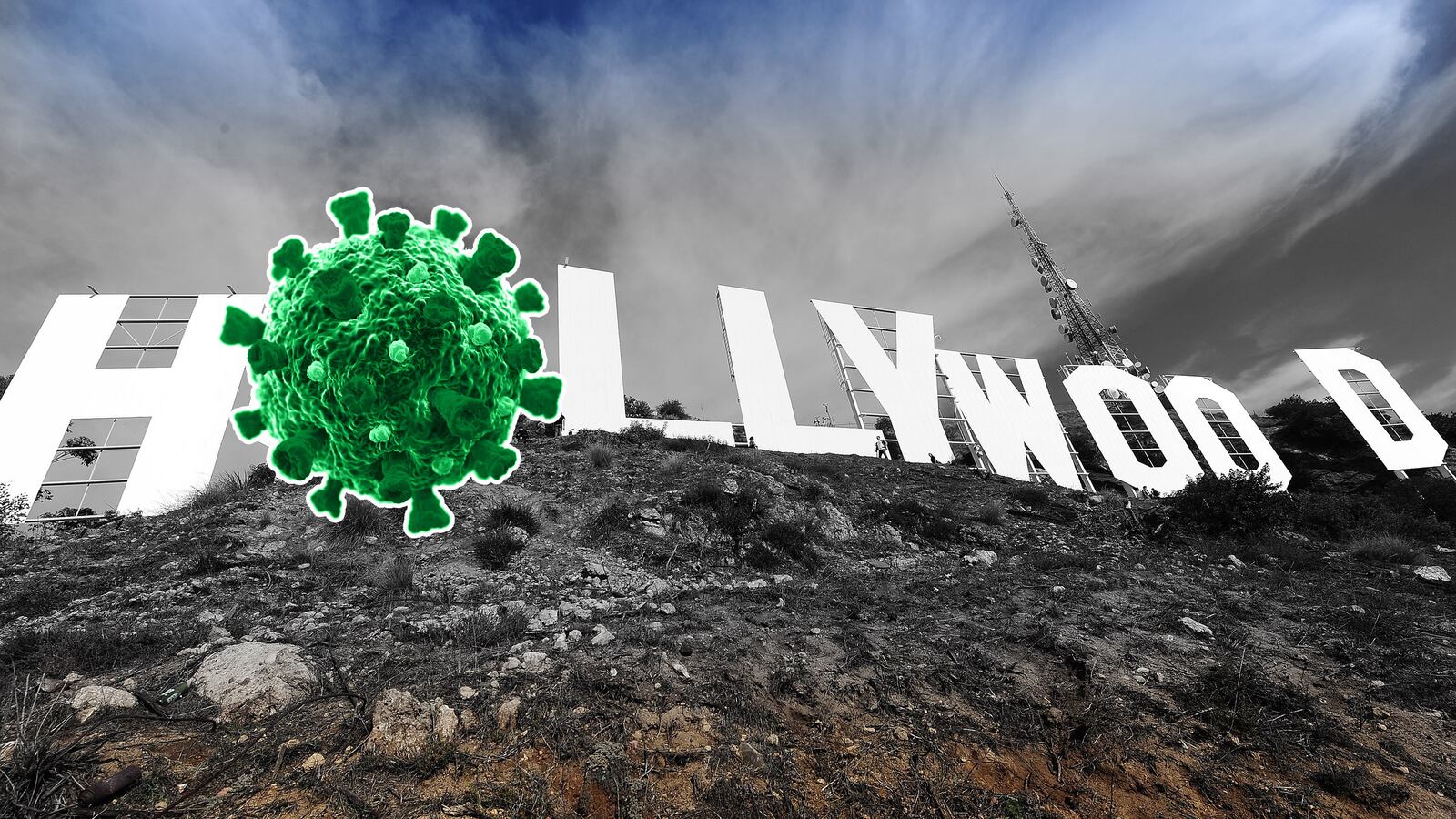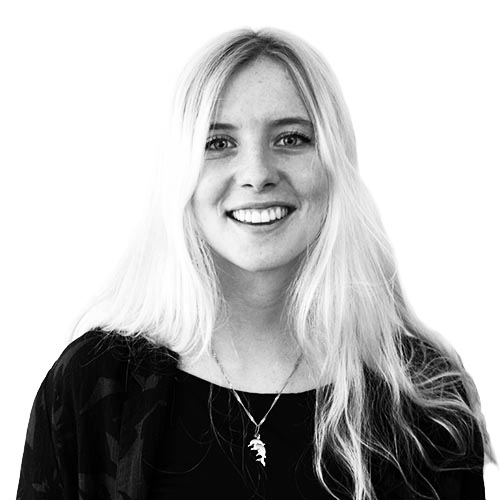In late December, Young Sheldon, the Warner Bros. Television sitcom about a 9-year-old science genius, reported 11 positive cases of COVID-19 on set. Another WB production, Lucifer, in which a devil ditches hell for Los Angeles, reported 13. Eleven more cases came from The Kominsky Method, a Michael Douglas-starring Netflix series where aging actors confront mortality. Around the same time, according to the Los Angeles County Department of Public Health’s COVID-19 database, which tracks workplace outbreaks from the past 14 days, Netflix had nine more positive cases; NBC Universal, including some crew of the show Mr. Mayor, had 23; CBS reported 45.
Last month, TV and film production continued, even as COVID-19 cases in Los Angeles surged precipitously. By Dec. 28, Los Angeles County was averaging 14,000 new cases and 73 deaths per day; as of Jan. 7, that average had soared to nearly 20,000, with 218 deaths per day. Local officials have called the spike “catastrophic”—limiting ICU capacity to 0 percent state-wide, forcing ambulances to wait hours to offload patients, ration their oxygen supplies, and turn away patients unlikely to survive. “Pardon my language,” said Dr Preet Malani, chief health officer and infectious disease physician at the University of Michigan, “but it’s a complete shitshow over there.”
On Dec. 6, when Southern California entered a stricter regional lockdown, outdoor dining ended and playgrounds were closed, along with hair salons, museums, theaters, and recreational facilities. (After pushback from parents, playgrounds were allowed to reopen in Los Angeles). But the entertainment industry was allowed to remain in operation. According to the California Department of Public Health, entertainment is an “essential business.”
Instead of a lockdown, Hollywood got an email. Eighteen days after the order went into effect, the Los Angeles County Department of Public Health sent a message recommending a “voluntary pause,” a spokesperson said. “Although music, TV and film productions are allowed to operate,” LACDPH officials wrote in the statement excerpted by the nonprofit FilmLA, “we ask you to strongly consider pausing work for a few weeks during this catastrophic surge in COVID cases.”
In response, several companies, including CBS Studios, Universal Television, and Warner Bros. Television, delayed production on a smattering of shows—most by just a week, according to the Los Angeles Times. Series scheduled to start shooting on Jan. 4 were pushed to Jan. 11; others until Jan. 18. The actors union SAG-AFTRA told the Times they’d agreed with several other industry groups to “recommend a temporary hold on in-person production in Southern California.” (SAG-AFTRA did not respond to requests for comment). But there are no formal limitations on production.
UCLA Professor of Epidemiology Dr. Timothy Brewer said that depending on execution, film production is no more or less dangerous than other activities. “It really depends on the specifics of the production,” Dr. Brewer, who consults on Hollywood productions, said. “Transmission of coronavirus depends on four factors.” The infectiousness of the individual, the length of time they spend near others, and their proximity to others can all influence transmission. “The fourth general area is mitigating factors,” Dr. Brewer said. “You’re more likely to be infected indoors than outdoors. Wearing masks is more likely to prevent transmission, as is hand hygiene. It’s a combination of those things.”
By the same token, however, Dr. Brewer said production was no safer than some of the activities banned under the new regional order. “I can think of no infectious disease or epidemiological reasons for why you prohibit people from going to playgrounds or outdoor restaurants if people were distanced and wearing masks, but allow film production to continue,” he said. “I would recommend you ask the public health departments for the data. There’s no infectious disease reason for why one would be safer than the other.”
The L.A. County Department of Public Health said entertainment workers were “deemed essential per the state.” The California Public Health Department declined to comment.
Hollywood’s relationship with local COVID-19 measures has yielded several recent scandals. In late November, the city announced plans to shut down a high-traffic COVID-19 testing site at Union Station in downtown Los Angeles for a day. Instead of testing the 504 Angelenos who had made appointments, the site would become the set for some 170 cast and crew members shooting a gender-swapped She’s All That reboot starring TikTok influencer Addison Rae. After pushback from residents and local media, Los Angeles Mayor Eric Garcetti announced that the shoot would be cancelled and the testing site allowed to remain open.
Just weeks later, a similar scenario played out at St. Vincent Medical Center, a shuttered hospital purchased in the spring by the billionaire owner of the Los Angeles Times, Patrick Soon-Shiong. Soon-Shiong had planned to turn the facility into a “central command” center for COVID-19 doctors and patients, to relieve pressure from the area’s overflowing hospitals. Instead, the venue was put up for lease through the locations company Real to Reel, and rented for two months to ABC, where it became the film location for the pilot of a medical sitcom called, incredibly, Triage.

Vehicles line up at a COVID-19 testing site at Dodger Stadium ahead of the New Year’s holiday on Dec. 30, 2020, in Los Angeles.
Mario Tama/GettyA spokesperson for the series declined to comment. A source affiliated with the show said the series was never approached by the owners or the city of Los Angeles about returning the facility to a working hospital during the time they were there.
One of the first visible COVID-19 outbreaks took place on a set, when Tom Hanks and his wife Rita Wilson contracted the virus amid the production of the Elvis Presley biopic, Elvis, shooting in Australia. In September, filming for Matt Reeves’ The Batman shut down after its star Robert Pattinson tested positive. The next month, 12 crew members on the set of Mission: Impossible 7 tested positive, delaying production for several weeks. When the project resumed in November, actor Tom Cruise was caught on camera berating his colleagues for allegedly failing to social distance.
The entertainment industry is one of the largest economic sectors in California. An Otis report from 2017 found that there were some 141,000 salaried and freelance entertainment workers in Southern California (or 248,100, when counting occupations indirectly tied to entertainment), generating some $3.1 billion in tax revenue. The most visible of these workers are actors or agents, bringing in massive annual incomes. But the vast majority of the labor force powering the American pop-cultural machine are working people with modest to mid-level wages.

The shuttered Laemmle Royal movie theater on Santa Monica Blvd in Los Angeles on Sept. 17, 2020.
Robyn Beck/AFP/GettyA 2012 study of the entertainment economy from the Hollywood Chamber of Commerce found that the average annual wage was $96,300 in the motion picture and video-related sector, $103,000 in the sound production sector, and $113,000 in the radio, TV, and cable sector. But that data was based on averages, combining both the highest and lowest incomes. ZipRecruiter, a job listing website that pulls data from the payroll software ADP, found that the majority of entertainment salaries in Los Angeles range from $40,763 to $79,410 per year.
But one differentiating factor between entertainment and other industries operating during the pandemic is regular testing. Productions have also hired COVID-19 compliance officers to ensure distancing and hygiene protocols are maintained on set.
“While industries are trying to maintain distancing and ensure mask use, the key difference in the film industry is regular and frequent testing,” said UCLA Professor of Epidemiology Dr. Jeffrey Klausner. “We’ve seen that be effective in the professional sports industry and elite private colleges. Where businesses do that, they can prevent and control the spread of COVID-19. It’s really not about is this business essential or not, it’s can this business protect their employees?”
Still, Dr. Malani said, serial testing can only collect so much information. “In terms of the numbers, you don’t get whether there were serious cases or secondary spread or did they go home and infect others,” she said. “You don’t get a sense for whether the entertainment industry is driving the surge in California. Probably not. But while there may be people who are doing all the right things, on the flip side, there are probably people who are being lax.”
And in Los Angeles, testing might collect even less. On Jan. 4, the FDA issued a safety alert about the Curative oral COVID-19 test, which they say is prone to false negatives when administered incorrectly. Curative, a start-up run by a 25-year-old British businessman with no medical background, has been providing self-administered oral tests to the Los Angeles area for months. While L.A. County stopped using the tests in June, they are widely distributed at Curative’s pop-ups and city-run testing centers, including Dodgers Stadium, which tests thousands of patients each day. The FDA advised that the oral swab be used only for symptomatic patients who must be observed by a health care professional.
But entertainment workers, Dr. Klausner argued, are not the most vulnerable population. “I think you have to look at the current COVID-19 surge, you have to see that it’s an outbreak of low-wage Latino workers,” he said. “It’s not people who are working in the media [and entertainment] industry. All recommendations have to be based on the data. The data suggests that Latinx populations are at the highest risk. And then within those populations, it’s construction workers, people who are adult daycare workers. It’s people who are working in manufacturing, where there’s no routine testing.”
“If people want to be up in arms about things, they should ask: Why isn’t there routine testing in these industries at the highest risk? Why isn’t there routine testing for construction workers and factory workers and daycare workers?”



